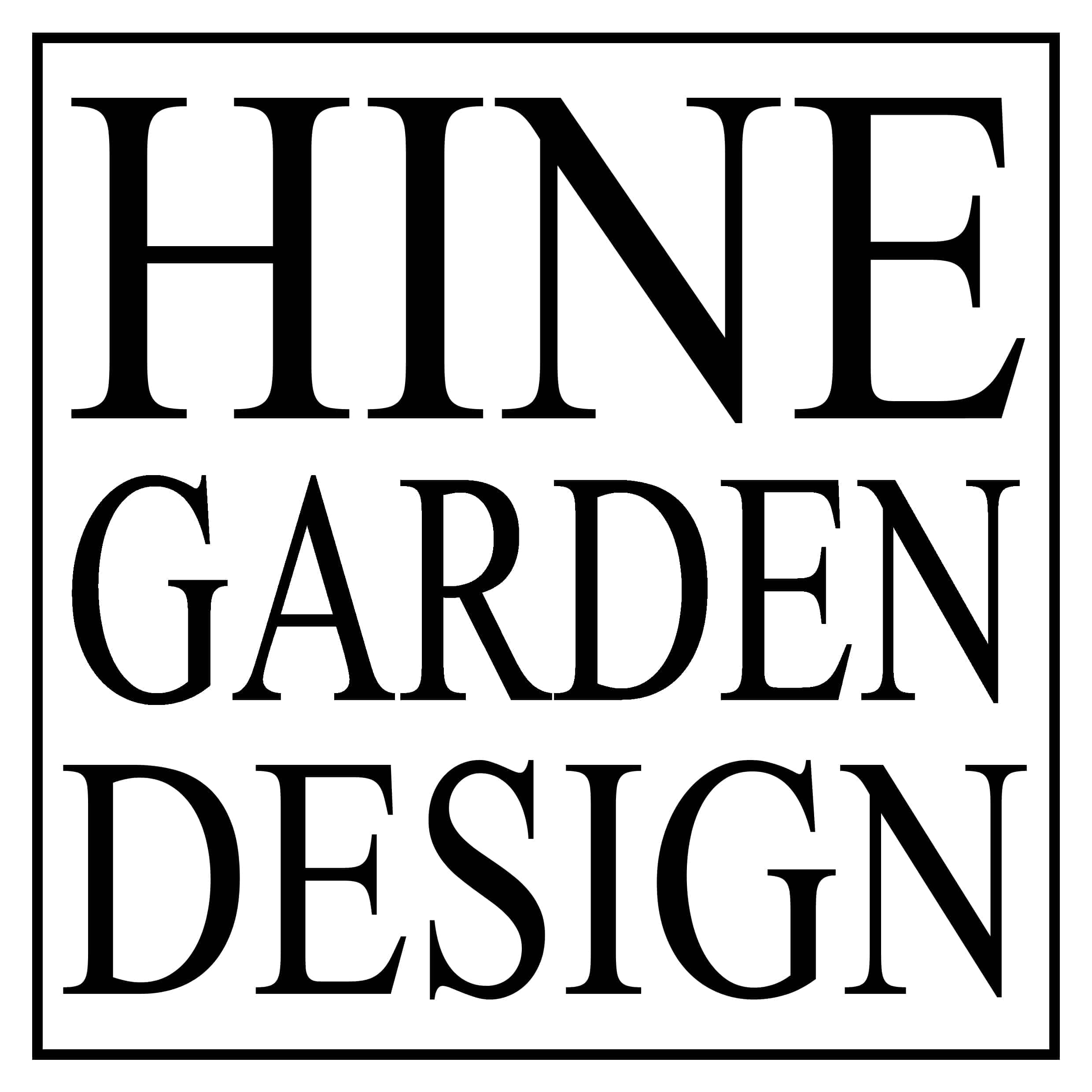Garden Design Element's
Discover Key Garden Design Elements to consider for your garden space
Now this is not an exhaustive list, I couldn't even say that everyday the order in which I list these Key Garden Design Features is the same, but this is where they stand today... For now anyway.
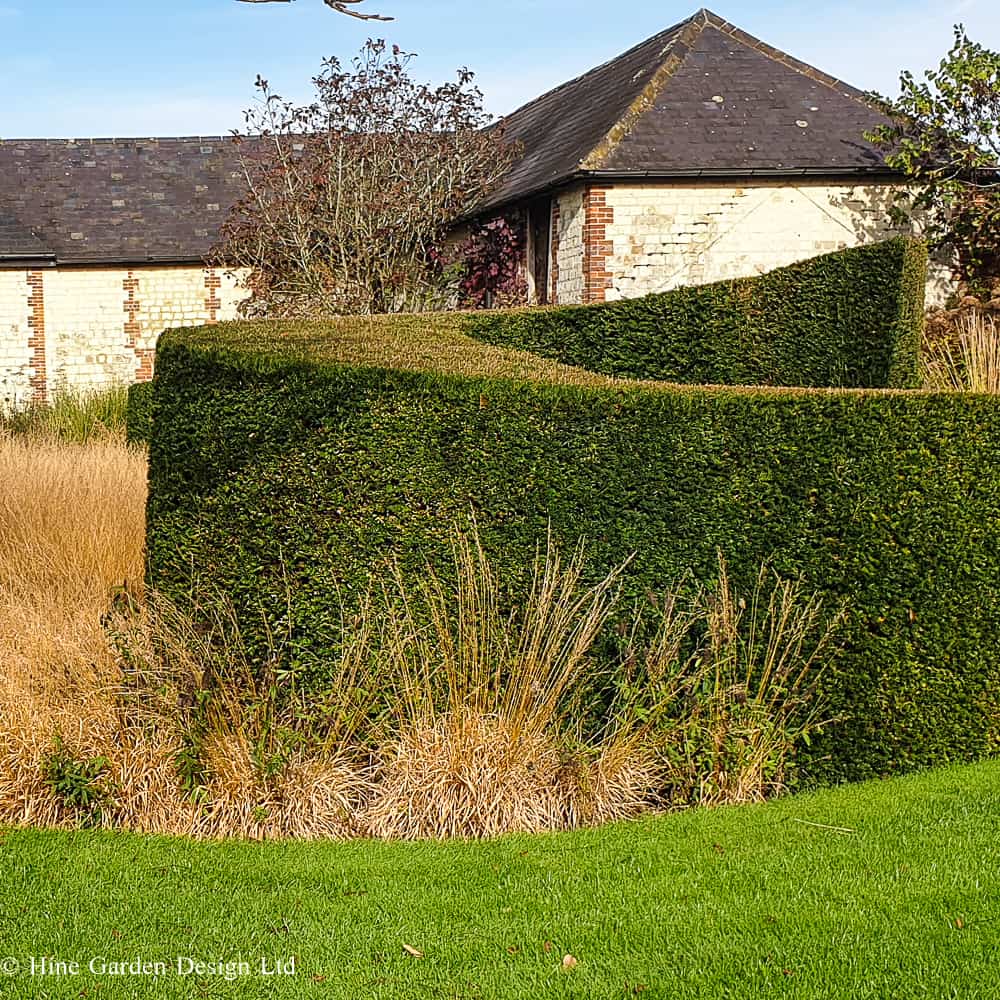
No.1 - Garden Hedges
Hedges are my number one garden feature, and for a good many reasons.
They provide structure in a space and in winter... - is there anything more emblematic of quiet elegant grace than a hedge, in late winter, with a dusting of snow contrasting with its vertical plane? Perhaps when it is paired with some contrasting topiary doing the same? They create depth to planting, creating a green backdrop (other colours are available). Hedges also mature much quicker than trees, when not already mature at the time of planting. In fact you can give your garden instant impact and plant a mature hedge at the fraction of the cost of doing so with trees. Creating gravitas is your garden from day one. Their wildlife credentials are numerous, from providing shelter and habitat to food and, more often in the case of deciduous hedges- ones that loose their leaves in Autumn/Winter), improved soil structure through leaves collecting at the base, which creates another layer of ecosystem to the garden, rich in wildlife you may never see, but has a rich positive cascade effect on the rest of your garden.No. 2 - Secluded Garden Seating Areas
These are some of what is special about having your own garden. When I lived in London, I had a small flat, with some shaded 'balcony' (read fire escape) that I, safely, planted up with some pots, but it was never secluded. Ever exposed, never private, always potentially observed. Being able to sit in a garden and feel wholly unexposed, safe, cossetted, is a luxury rarely possible even for people that do have a garden in the common vernacular- planting borders pushed to the garden edges and some exposed seating, top and/or tailing the garden, for example. Nowhere to feel the peace of being un-observed, by neighbours, and yes even, sometimes, the people you live with. That kind of peace is a rare jewel that should be better catered for in this rather observed and populated world we live in.

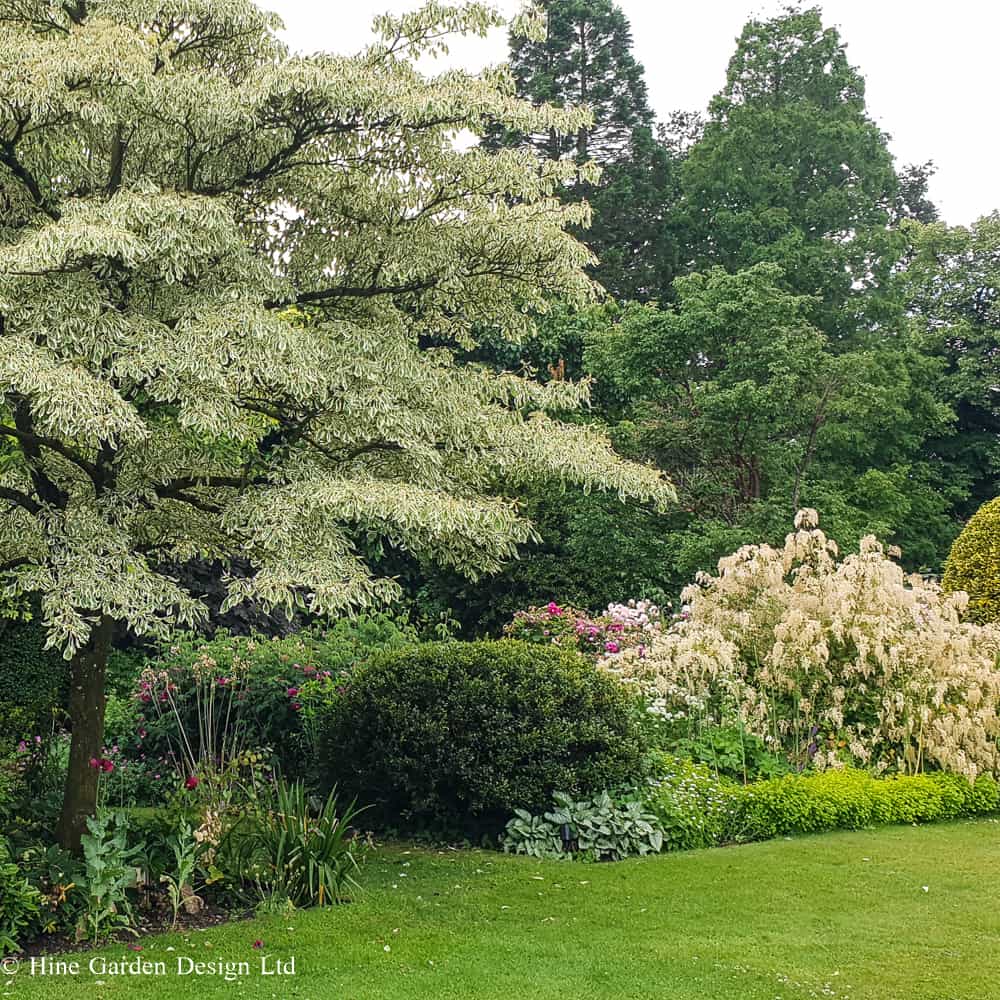
No. 3 - Deep Planting Beds
Deep planting beds are a real boon to a garden. They allow for opportunities to combine a variety of contrasting and complementing plant types together. You can explore the use of some of the more tall herbaceous perennials and ornamental grasses without the planting overwhelming the space. You can also combine trees and shrubs in amongst the ornamental grasses and herbaceous perennials to create fabulous contrast in planting, but also some extra winter presance.
They obviously provide great habitat and shelter for wildlife that can stay out of the way of predators, and forage on the plant material. Deep planting beds also have a hidden benefit- They can help reduce flooding, become part of your garden's defence against flash floods as they will take on water better than anything else surface wise in your garden space.No.4 - Garden Trees
Whilst trees can take years to get to maturity, depending primarily on budget, pergolas or planting beams, offer instant vertical presence, and depending on the deign they can preform a great many functions, a few are discussed here.
By virtue of their structure they can frame certain views in and through a garden, herald an arrival or the start of a journey. Vertical design elements such as these can break up views hiding unwanted outlooks and even provide privacy by breaking up neighbours line of sight into your garden. They allow for planting at eye level and above your head such that you can walk through the bower of roses or a multitude of different climbers depending on your tastes, drawing they eye through the garden space, lifting it from ground level planting to enjoy the views through the aspects of your garden.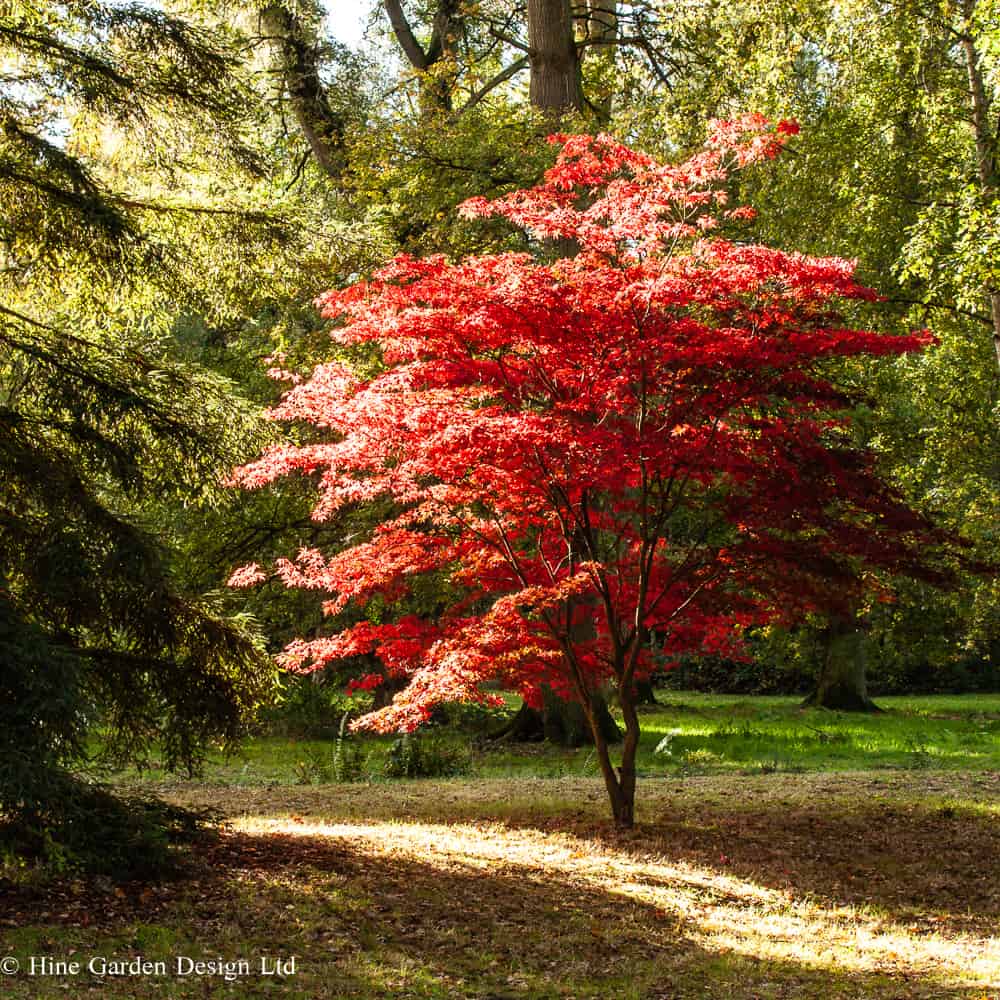
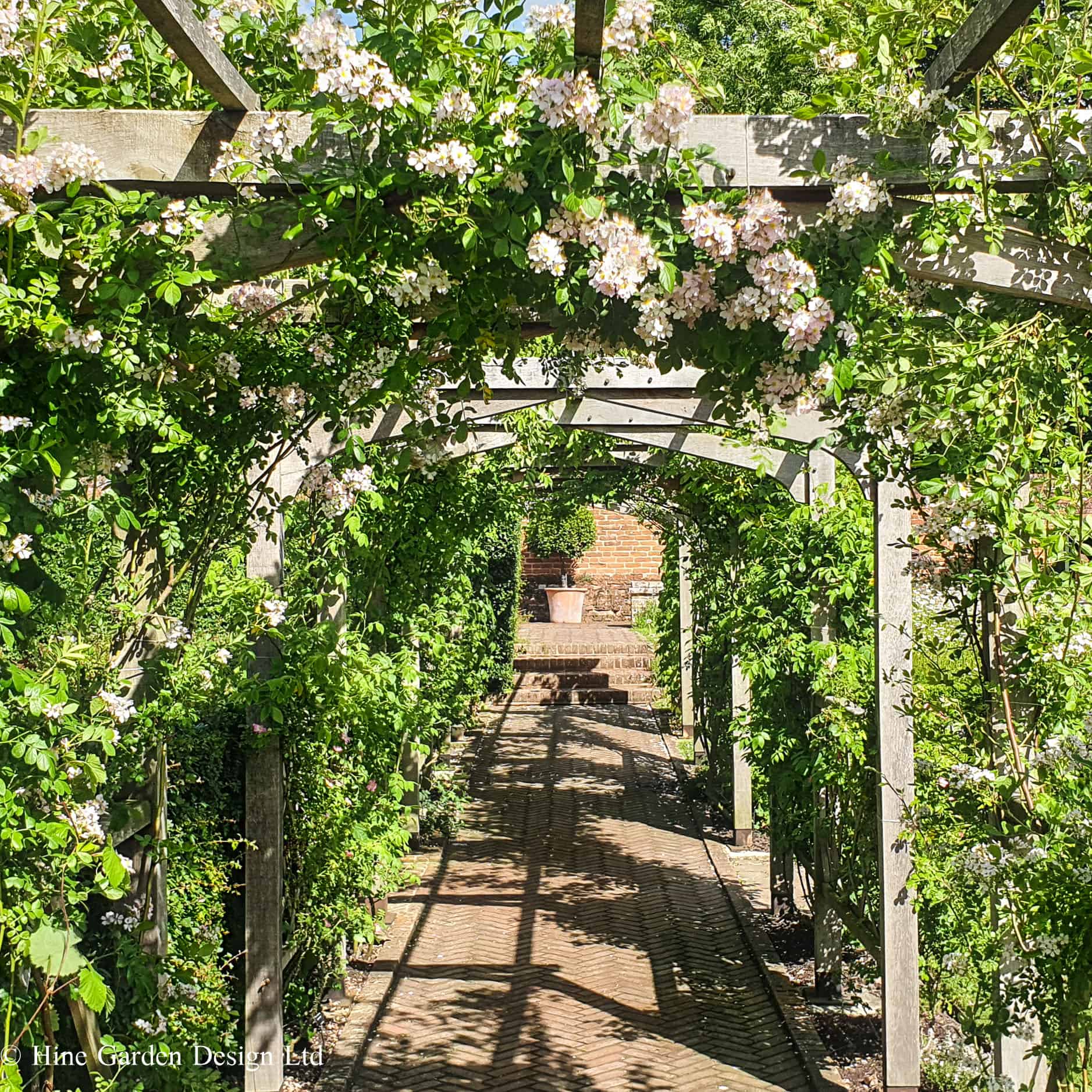
No. 5 - Vertical design- Pergolas / Planting beams
Whilst trees can take years to get to maturity, depending primarily on budget, pergolas or planting beams, offer instant vertical presence, and depending on the deign they can preform a great many functions, a few are discussed here.
By virtue of their structure they can frame certain views in and through a garden, herald an arrival or the start of a journey. Vertical design elements such as these can break up views hiding unwanted outlooks and even provide privacy by breaking up neighbours line of sight into your garden. They allow for planting at eye level and above your head such that you can walk through the bower of roses or a multitude of different climbers depending on your tastes, drawing they eye through the garden space, lifting it from ground level planting to enjoy the views through the aspects of your garden.No.6 - Subtle Sensitive Garden Lighting Design
Good garden lighting design shouldn't be about the lighting. It should be about the garden, the house, the people in it. Subtlety in lighting fixture choice and position, sensitivity in colour temperature and the intended use of the lighting, that is what brings elegance to a lighting scheme.
It is vitally important to me that the principals of the 'Dark Sky Initiative' guide the decisions made with lighting designs for my gardens. Primarily that focusses on lighting being used sparingly, using down- light as much as possible, and being selective with your lighting colour spectrum. Whilst that all sounds a bit technical, it is important and if I have sparked your curiosity you can read more about it on the Dark Sky Website. Link below.
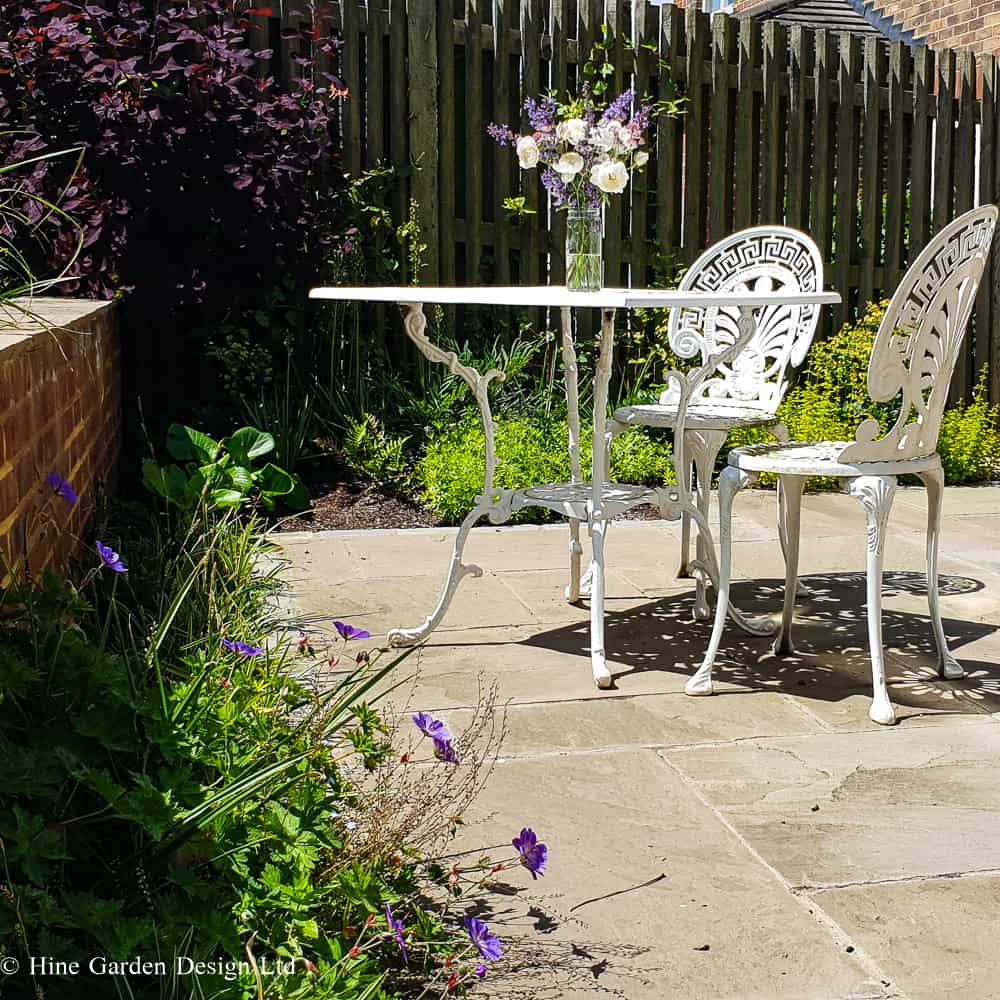
No. 7 - Garden Terrace
There is a strange amount of debate about what exactly a garden terrace is. For clarification, to my mind a garden terrace is usually a area of paving abutting the house, I say usually because I also consider that a raised area of paving (not decking) might also be called a terrace. We will be dealing with the former in this case.
A terrace near the house makes it easy to step out into your space with a morning cup of tea, or whatever your morning start is and enjoy your garden. Even if the rest of the day is 'go go go', out to the office or running chores, you can easily take a moment at any point of the day to step outside when at home, even for a couple of minutes, breathe it in and stop, pause, or maybe just take a quick moments breath, and added bonus if you haven't the time to pop some shoes on your feet shouldn't get too muddied on the paving- pets and children depending! Please not evening visits to the terrace are also encouraged!
Having an area of paving near to the house is not only a easy invitation to step out into your garden, but it is also a practical decision for most- unless you have a fully fitted out door kitchen AND you want to cart everything to the other end of the garden when cooking at it- site the paving, (and any outdoor kitchen!) near, or with easy access to your house and internal kitchen, where possible.
No. 8 - Pathway through planting
A Pathway through planting, in particular if you have gone for those deep planting beds we've talked about, allows you to really enjoy the journey through your space. If your going to have a garden, the chances are you'll need at least one pathway, why not make it through some planting so that you can take in the experience of your flourishing garden whilst you perform the simple task of walking through it. I often like to pair this with something vertical, whether that be through trees, or something like a pergola... A simple pathway is elevated and itself becomes a feature of the garden.
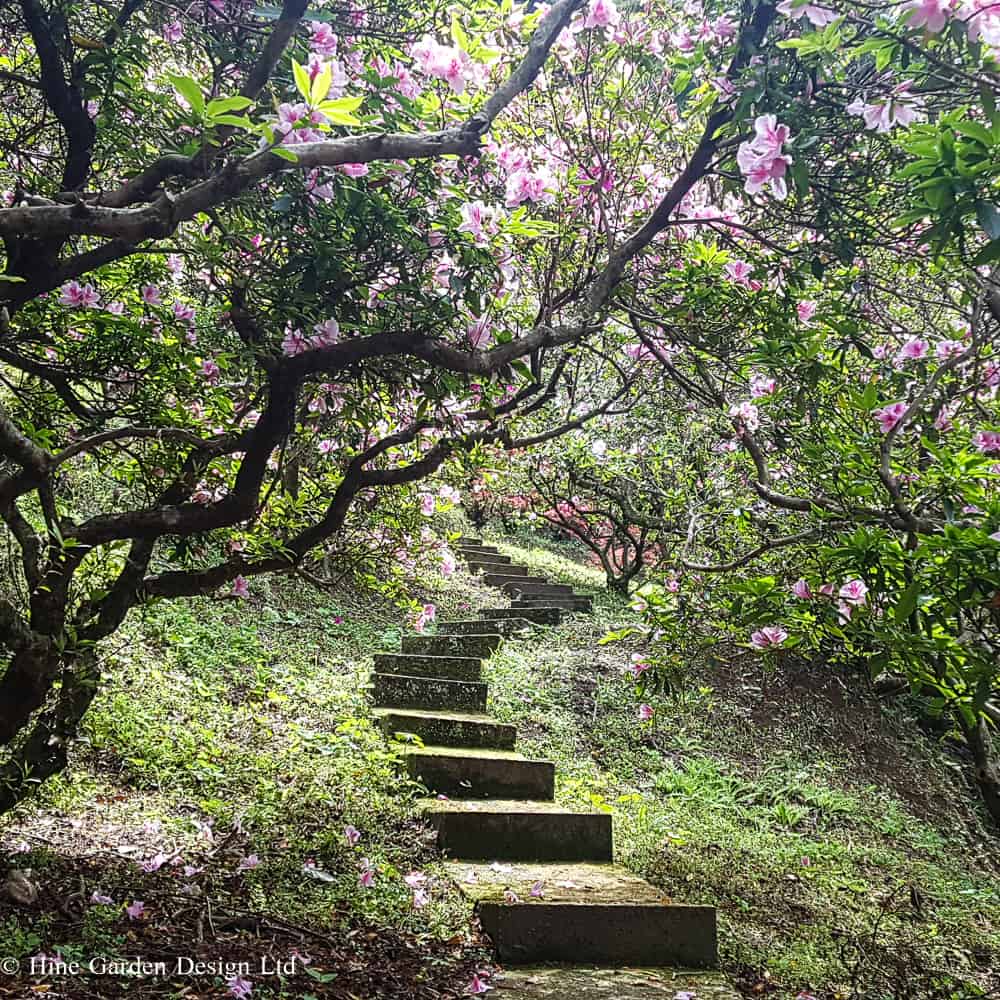
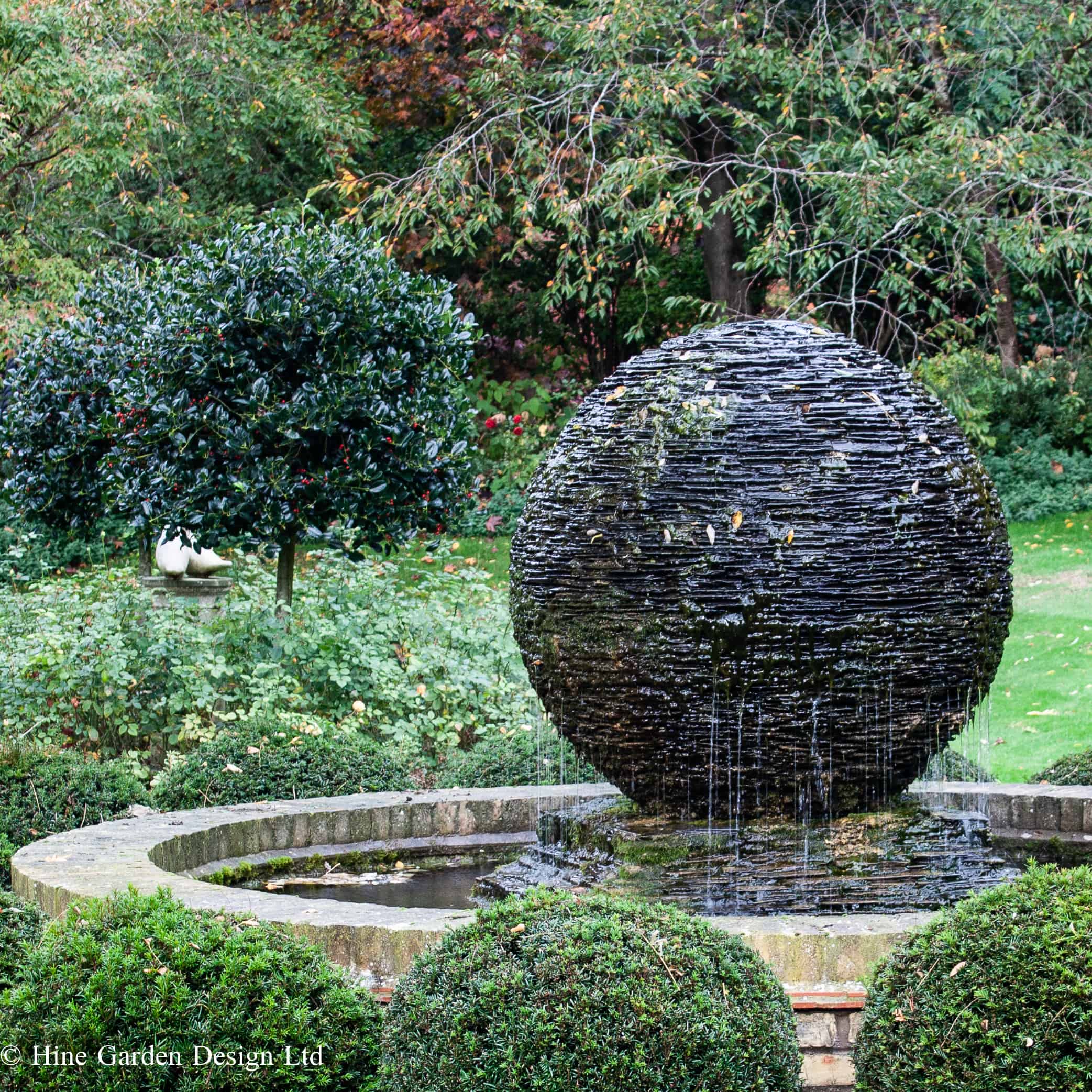
No 9. Garden Water Feature
Water in a garden adds a beautiful element of play, reflection, a sense of arrival... And a great deal more. It is also valuable to wildlife when proper care and attention are afforded in the design. The inclusion of water can provide sound a focal point and clarity. It can connect a space to its wider enviornment, it can provide a function in terms of exorcize, peace and tranquillity or create a place for gathering and comming together. If you can include water in your space it will always provide more than you originally planned.
No. 10 - Paving textures
Using complimentary contrasting paving textures and colours can add definition to a space... Create a flow through the garden and guide the casual observer through the space without them noticing. It can also offer the chance to pay homage to some of the building materials of the house or buildings in the garden where sensible, anchoring the buildings in the garden, grounding them.
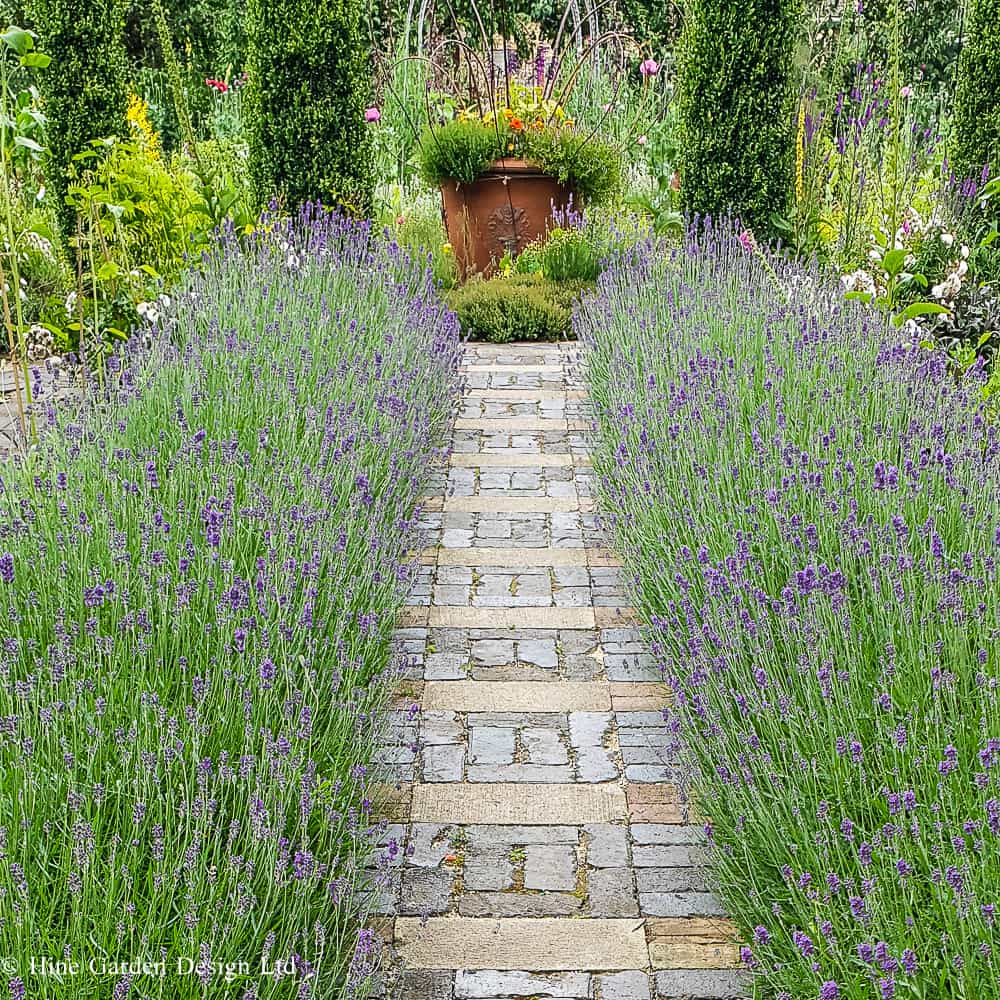
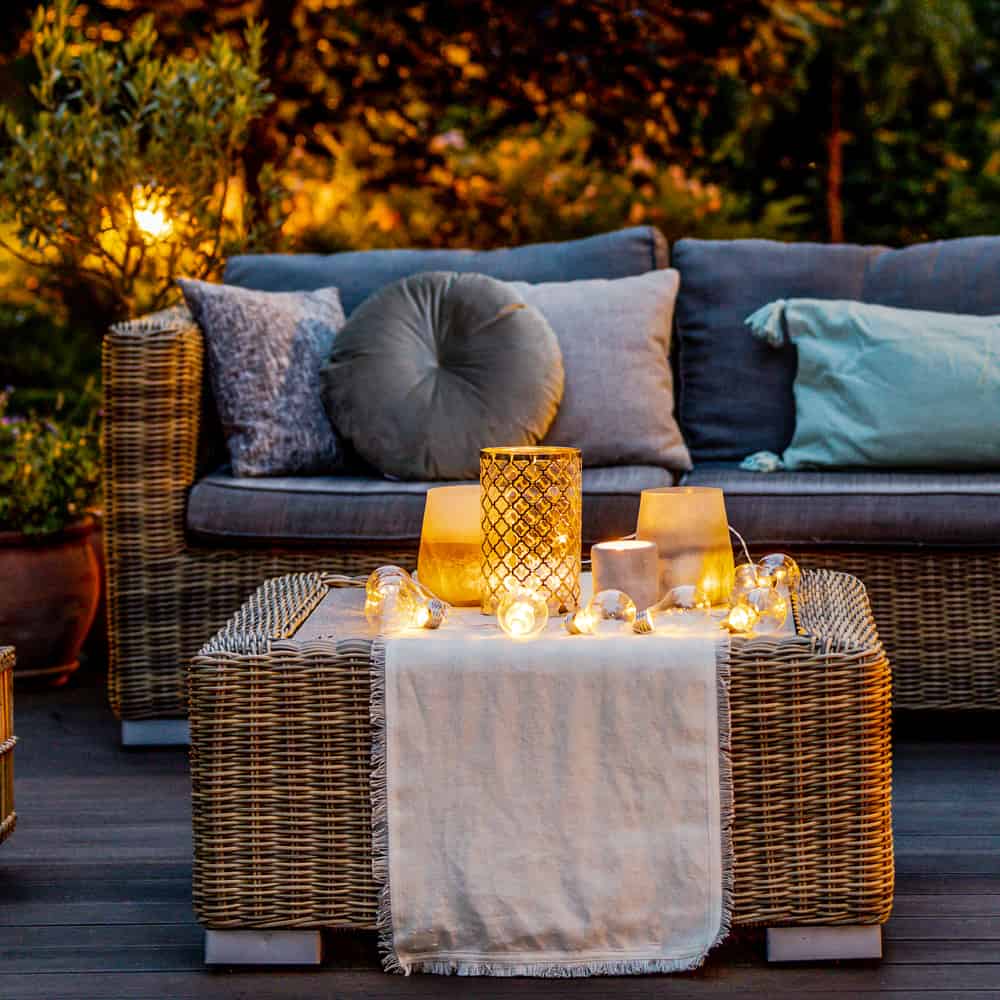
No.10.1 - Lounge style Garden Seating for Entertaining (honorary mention No 1)
Having a second area to entertain means your guests get to enjoy your garden from multiple aspects, but so do you! If you have spent the time and energy working with a designer or creating multiple spaces for sitting make them a destination. Read more about working with a designer by clicking on the link below to our Garden Design Process page.
Using bench or couch style seating offers a relaxed alternative to upright dining chairs to cosy up- perhaps with a central fire feature whilst enjoying a post dinner drink or even a light finger food style snack. The seats make it inviting and the reward is the fabulous change of scenery in your beautiful garden. During the rest of the day the bench style seats give you somewhere to relax with a book, perhaps doze off for a few minutes of garden peace and quiet.No. 10.2 - Topiary (honorary mention No 2!)
Topiary has to have a honorary mention here. In much the same way as hedges, they provide important winter structure and wildlife habitat. It offers a real chance to be creative either for formal or a more playful effect. Topiary can be a real winter dusting of snow, showstopper.
If you have a beautifully historic aesthetic to your house it also has a connection with our garden history and can be used to effectively anchor the garden with the house setting.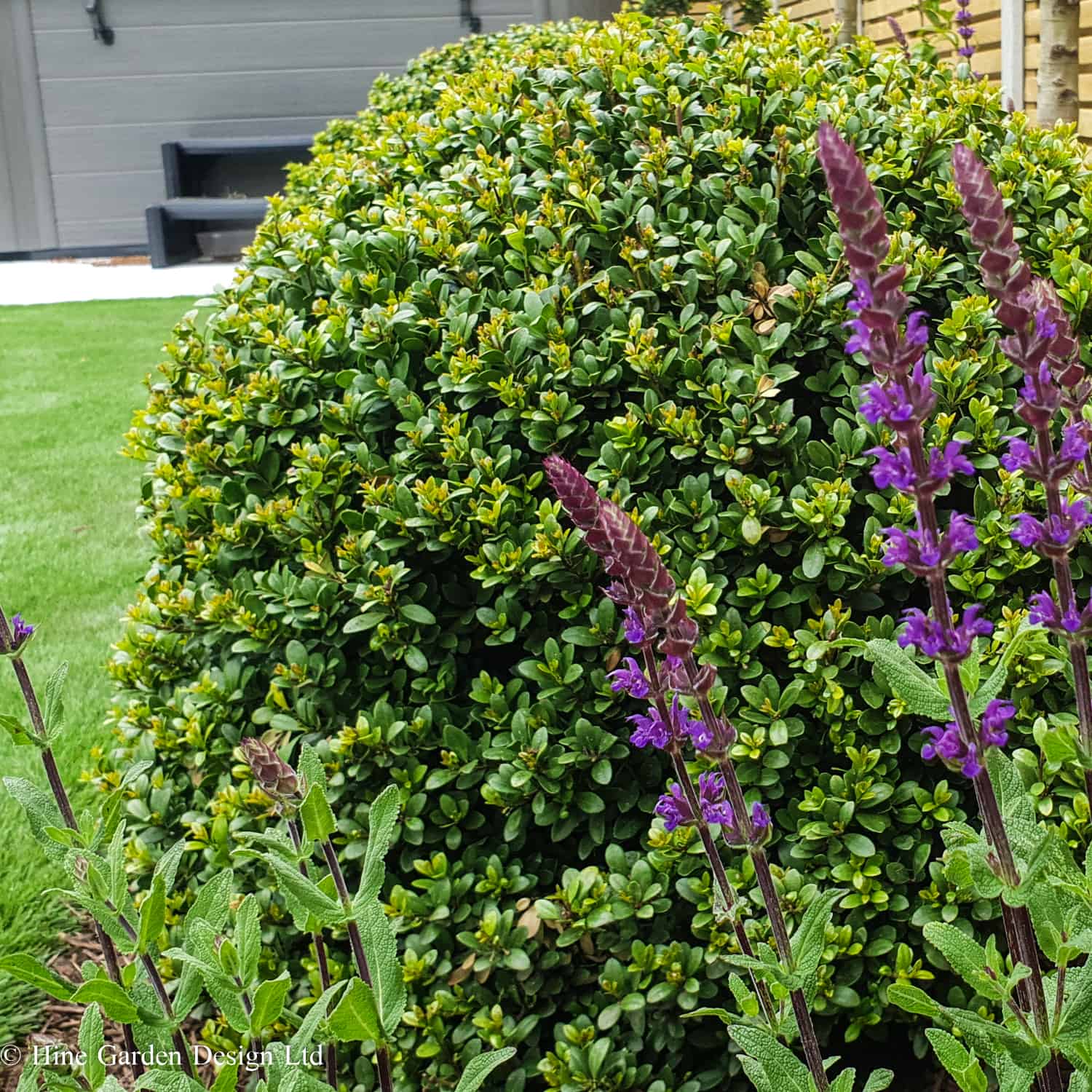
There you have it! A guide to some of the features I try to find room for in my Garden Designs. Check out some of my Garden Design work by clicking the link below and checking out my project's page.
- Amber Hine
Landscape & Garden Designer, Hine Garden Design.Looking for Garden Design Inspiration?
Take a glance at some of our Garden Design work by clicking the link below and perusing my project's page.
